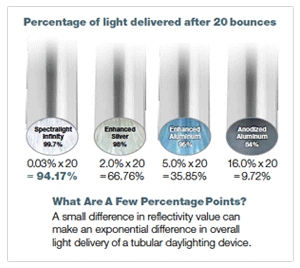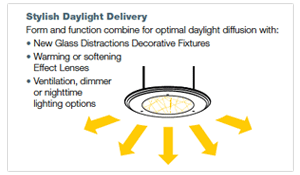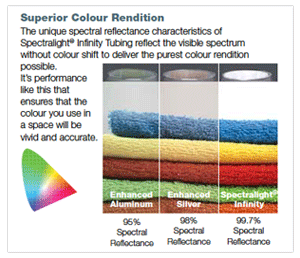When it comes to bringing natural light into your home, skylights and solatube are two popular options. While both solutions allow sunlight to illuminate your interior spaces, they each come with their own set of advantages and considerations. If you’re wondering, “Are solatubes better than skylights?” this article will break down the key differences and help you decide which is the best choice for your home.
What Is a Skylight?
A skylight is a traditional way of letting natural light into your home. These windows are installed in the roof, offering a direct path for sunlight to enter a room. Skylights come in various forms, including fixed, operable, and tubular models, and are often used in rooms that lack natural light, such as bathrooms, kitchens, or hallways.
While skylights have been a popular choice for years, they are not without their drawbacks, including issues like heat gain, heat loss, and difficulty controlling light levels. This is where solar tubes come in as a modern alternative.
What Is a Solatube?
Solatubes (also known as tubular skylights or sun tubes) are an innovative way to capture and redirect natural light into your home. Unlike traditional skylights, which use large windows, solar tubes consist of a small reflective tube that collects sunlight through a dome on your roof and funnels it into a room below.
One of the main advantages of solar tubes is their ability to channel light into spaces without the same heat gain and loss issues that affect skylights. They are more energy-efficient, more flexible in terms of installation, and can be a better choice for homes that need focused lighting in specific rooms.
Solatubes vs. Skylights: Key Differences
1. Heat Gain
- Skylights: Traditional skylights can contribute significantly to heat gain during the summer. Because skylights filter sunlight into your homes, the larger the skylight, the more heat it lets in, increasing your home’s cooling costs.
WERS (The Australian Windows Energy Rating Scheme) & the NFRC (National Fenestration Rating Council) use a measurement called Solar Heat Gain Coefficient or SHGC for short, to judge a window or skylight products energy performance in terms of the amount of heat transferred into a room.
Unfortunately skylight products in Australia are not required to undergo the necessary testing to assess their SHGC performance. This means that as a consumer, it makes it difficult to compare Australian skylight products’ effectiveness against heat gain.
- Solatubes: Solatubes have a distinct advantage over skylights when it comes to controlling heat. The tubing in solar tubes is designed to minimise heat gain, keeping your home cooler in summer. This makes solar tubes more energy-efficient overall.
At Solatube, our modern tubular daylighting system incorporate a wide variety of technological advances, including advanced optical technology in the dome, a patented protective coating on the tubing & a duel lens system in the diffuser, to name a few. We are proud of these completely unique system features and have had both of our 160DS & 290DS daylighting systems tested by the NFRC. Be aware some manufacturers will provide SHGC figures as some of the components they use have been tested individually. But these results would not be true for the system as a whole once it is installed. Be sure to check that any SHGC figures provided are for the ‘complete system’ installed, as ours is, rather than just a few of the components used.
2. Heat Loss
- Skylights: Skylights can be a major source of heat loss in your home, particularly in cooler months. Since they are installed directly into the roof, they allow warm air from the home to escape easily. This results in higher heating costs and drafts, especially if the skylight is not properly sealed or insulated. Skylights are often rated using the U-Factor, which measures the amount of heat lost through the window. A lower U-Factor means better insulation and less heat loss. However, Australian skylights are not always required to undergo U-Factor testing, making it difficult for homeowners to compare energy efficiency across products.
- Solatubes: Solatubes, on the other hand, have been designed as sealed systems with superior insulation properties. Their reflective tubing and the sealed dome help to minimise heat loss, keeping your home warmer in winter. Solatube’s daylighting systems have been rigorously tested by the NFRC and have an impressive U-Factor of just 2.44, making them more energy-efficient than most double or even triple-glazed windows. Since solar tubes are smaller and more focused, they do not cause the same heat loss issues as traditional skylights.
3. Light Control
- Skylights: One of the most significant challenges with traditional skylights is the lack of control over light levels. During midday, a skylight can let in too much light, creating glare and making your room uncomfortably bright. A lot of homeowners even have to search for “How to darken a skylight” after having a skylight installed.
- Solatubes: Solatubes offer a higher level of control over the light entering a room. They can be equipped with dimmers or reflective coatings to adjust the intensity of the light. Some systems even allow for the addition of ventilation or accessory diffusers to help regulate light more effectively.
For example, Solatube’s electric skylight dimmer, allows you to dim daylight from 100% down to just 2%, providing you with exactly the amount of light you want, no matter what time of day it is. Furthermore, our glass distractions and decorative fixtures allow you to choose the ceiling fixture and lighting effect you want depending on the ambiance or look you want to achieve in each room. Glass decorative fixtures also enhance the light output into the room, ensuring you get the purest of daylight into your room.

4. Colour Rendition
- Skylights: A common issue with traditional skylights is poor colour rendition. Due to the materials used in the dome, tubing, or diffuser, natural light that enters through a skylight can often appear “off colour.” This happens because skylights can distort the colour spectrum of sunlight, making the light appear yellowish, greyish, or dimmer than natural daylight. This can cause the colours in your home—furniture, walls, and décor—to look dull and lack vibrancy.
- Solatubes: One of the standout features of solatubes is their superior colour rendition. Thanks to advanced optical technology in the dome and highly reflective tubing, Solatube daylighting systems transmit sunlight into your home with 100% colour rendition and a 100% UV filter. This means you get the exact same light inside as you would outside, preserving the natural hues of your home. With solar tubes, the colours in your rooms stay vibrant and true, making them a popular choice for designers and architects seeking accurate, natural lighting.
5. Installation Flexibility
- Skylights: Traditional skylights can only be installed directly above the room they are meant to illuminate. This limits their placement options, especially in homes with complex roof structures or low roof spaces.
- Solatubes: The advent of tubular skylights, tube lights and sun tubes provided a little more flexibility with positioning. However they where still limited by obstacles in the roof and the tube length required to travel from the roof to the room. The longer the tube, the more light is lost.
For example, Solatube’s daylighting systems use a unique and patented reflective tubing which allow our systems to travel over much greater distances, even around obstacles in the roof. In fact the 160DS can travel up to a huge 6m with limited light loss. The 290DS can travel even further – up to 9m with similar limited light loss results. How many skylights in the market can do that?
6. Maintenance and Durability
- Skylights: Skylights, especially older models, can require frequent maintenance. Leaks, condensation, and cleaning can be issues, as dirt, debris, and water can accumulate around the skylight.
- Solatubes: Solar tubes are low-maintenance solutions. With fewer parts exposed to the elements and no need for cleaning the inside of the tube, they are more durable and easier to maintain over time.
Are Solatubes Better Than Skylights?
When comparing solatubes vs skylights, it’s clear that solar tubes offer many benefits over traditional skylights. They are more energy-efficient, provide superior colour rendition, and give you better control over light levels. If you’re looking for a solution that provides natural light without the downsides of heat gain, heat loss, or glare, solatubes are likely the better option for your home. They are also a more affordable and flexible choice, especially in areas where skylights may be difficult to install or may not suit your home’s design.
If you are looking to install solar tubes for your home, fill in your postcode and find the nearest Solatube dealer here for a free quote, or call us on 131619 for a consultation.





Why would water leak through our solar tube ?
Hi Elizabeth, Is is a product manufactured by Solatube Australia or a general tube skylight product? Copy cat products often do not use a high quality roof flashing tailored to Australian Roofs, which is a common cause. Leaks also comes from other issues in the roof. Water can travel Meters along the underside of a roof before it hits the tube. We train all of our Certified installers is issues like this and can help rectify the problem if you contact us on 13 16 19.
Hi, I’ve been told that vented skytubes (of all brands) necessarily require the removal of the UV filters to enable air flow, meaning they aren’t suitable to install in locations such as WIRs where they may result in clothing fade. Is this correct?
Hi Kelly, UV filter are created though an additive in the plastic dome. There is no reason a vented tube skylight should not include this same additive in its dome. Skylights that vent though the tube are often poor performance products. High performance products will vent though a separate duct at the roof to a single ceiling fixture. This removes the risk of moisture and/or mould build up on the tube to ensure the highest reflective. All tube skylight manufacture by Solatube Australia include UV filters.
Hi Brett,
I live on a main road and wanted to know if I would have issues with noise?
Cheers,
Phuong
Hi Phuong,
Best idea is to speak with the local Premier Dealer in your area, if you can type in your postcode on this link, it will provide contact details to discuss further. https://solatube.com.au/solatube-premier-dealers/